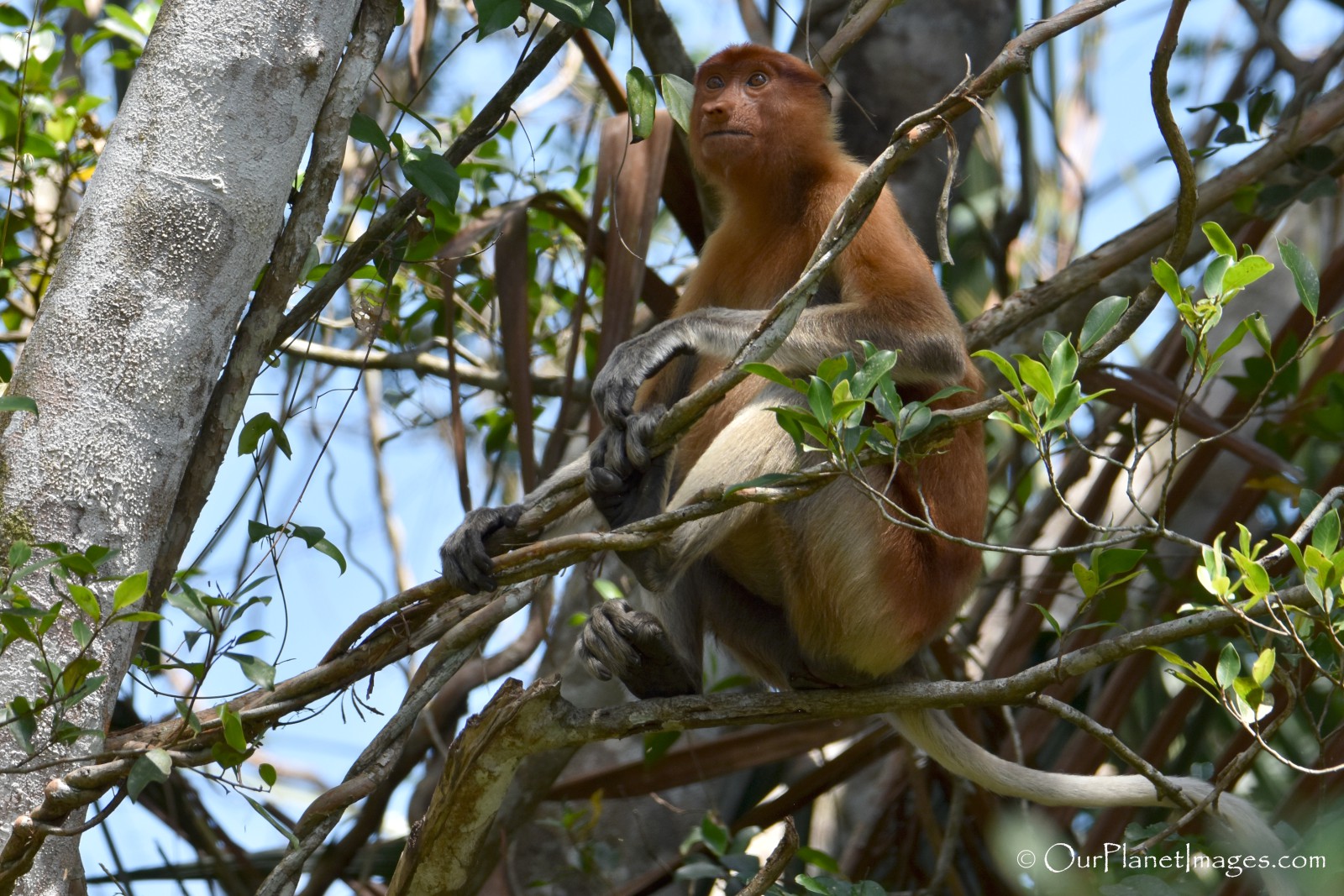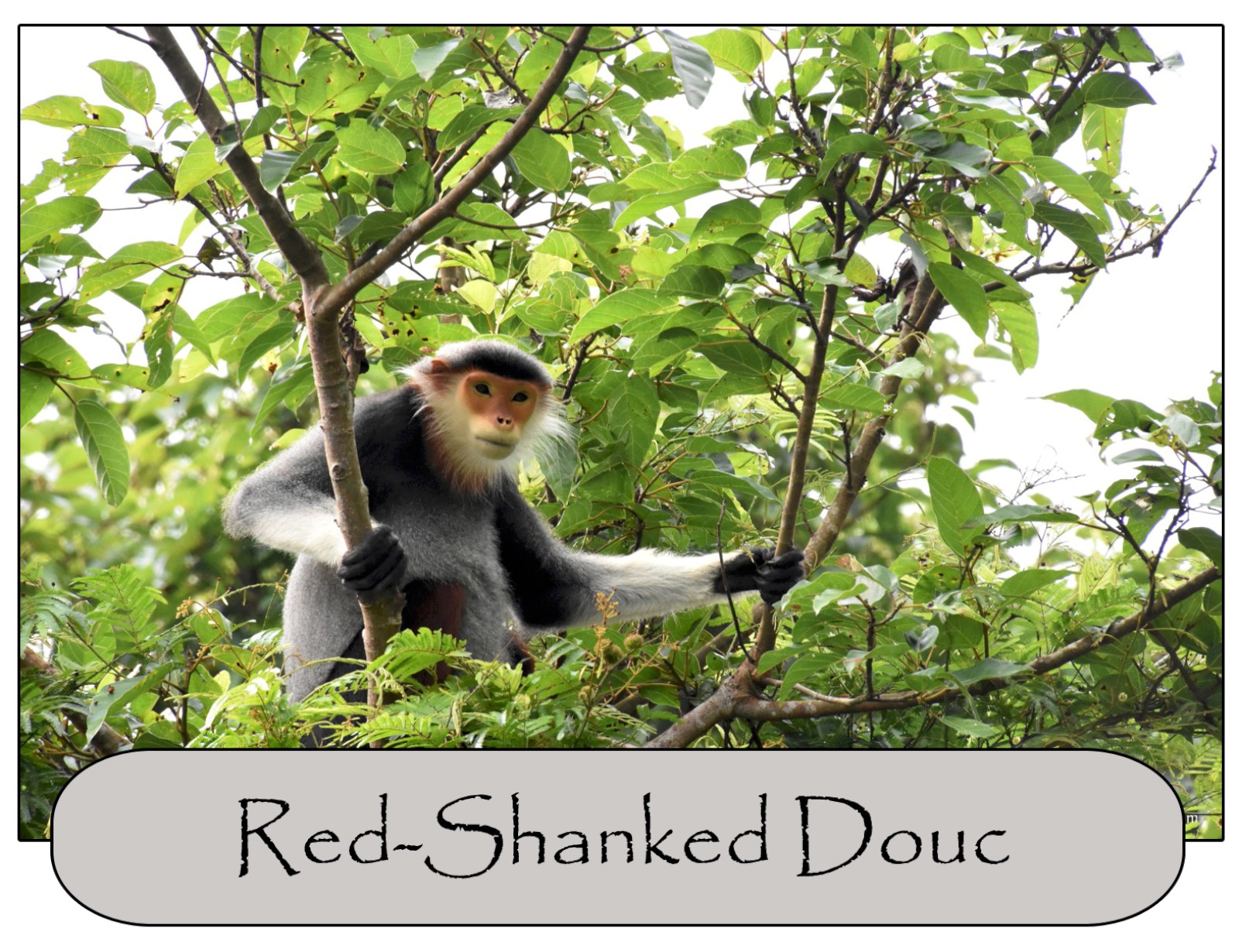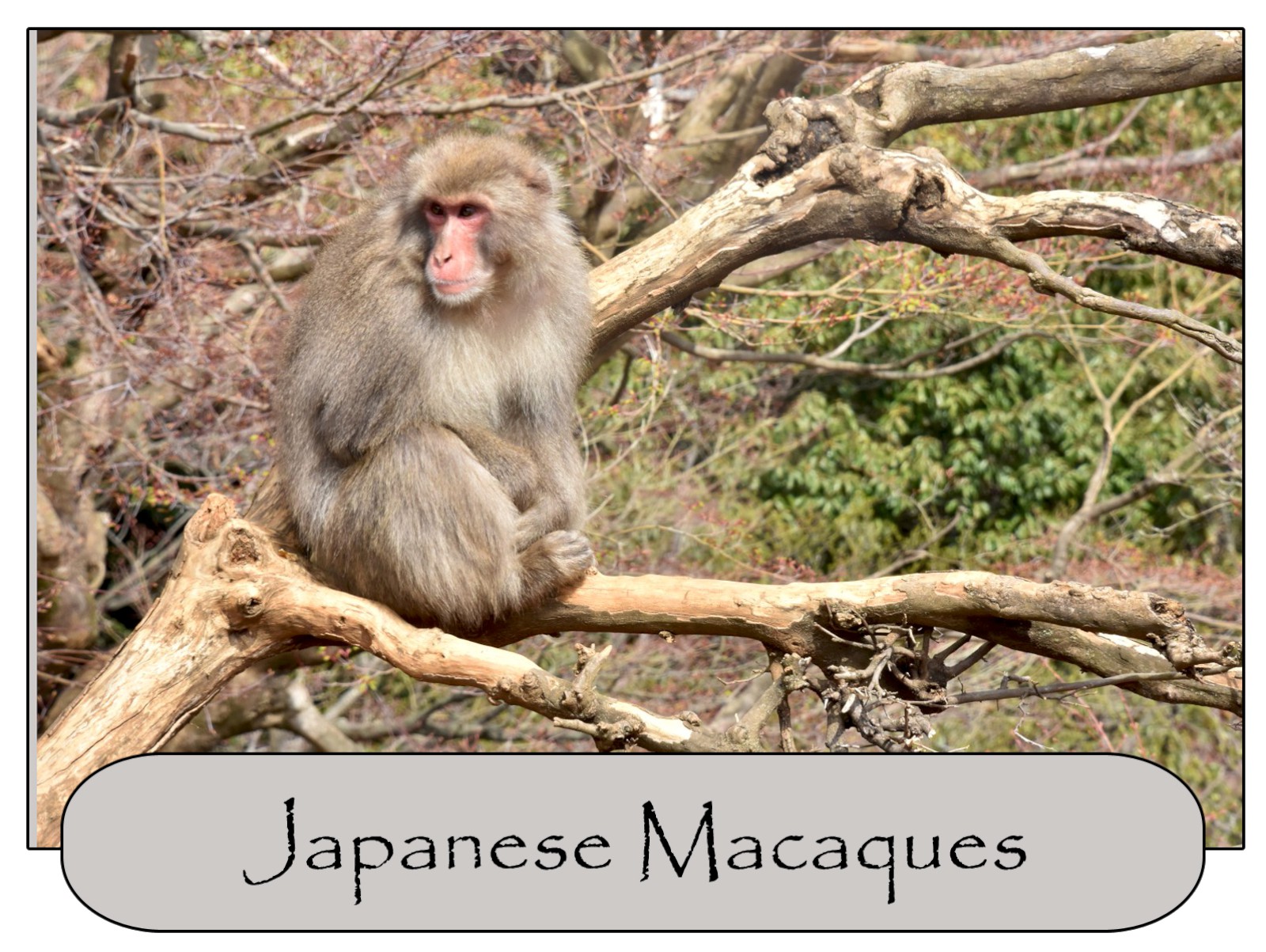Proboscis Monkeys are known as long-nosed monkeys and live on the island of Borneo in the coastal mangroves or forest area along rivers.
Proboscis Monkeys are endemic to the jungles of Borneo. They live along the island’s river channels, coastal mangroves and swamps. They are highly arboreal, staying almost exclusively in the trees and will rarely make their way down from the trees to search for food.
The Proboscis Monkeys are Red Listed as an endangered (EN) species by the International Union for Conservation (IUCN) and are a species with a very high risk of extinction. The largest populations of Proboscis Monkeys live in the Lower Kinabatangan floodplains of the state of Sabah within the Malaysian portion of Borneo. They can also be seen in Brunei and the Indonesian portion of Borneo. All of the photos in this post were taken in the Padas Damit Forest Reserve on the Klias Peninsula in the state of Sabah.
Wildlife Note: I feel very fortunate to have been able to see these primates and even more fortunate to be able to get a few quality photos. Seeing any wildlife is never a sure thing and many times it come down to being lucky. I had a very limited time to search for the Proboscis Monkeys and it was only possible to find them by using a small boat to maneuver along the river. Locating them was only the beginning, photographing monkeys as they moved through the tree limbs from a rocking boat is more difficult than it might seem. Additionally, getting a clear shot through the tree limbs with good lighting is tough.
Considering the photographic conditions and the slim likelihood of me actually encountering these primates, I am very happy to feature the photos in this post.
Namesake Characteristic
The male Proboscis Monkeys grow longer nosed that hang down over their mouths as they mature. Their noses can get so big that they need to push them out of the way in order to eat but lorger noses will increase the sound of their calls. It is thought that females prefer larger noses and louder calls when selecting a mate.
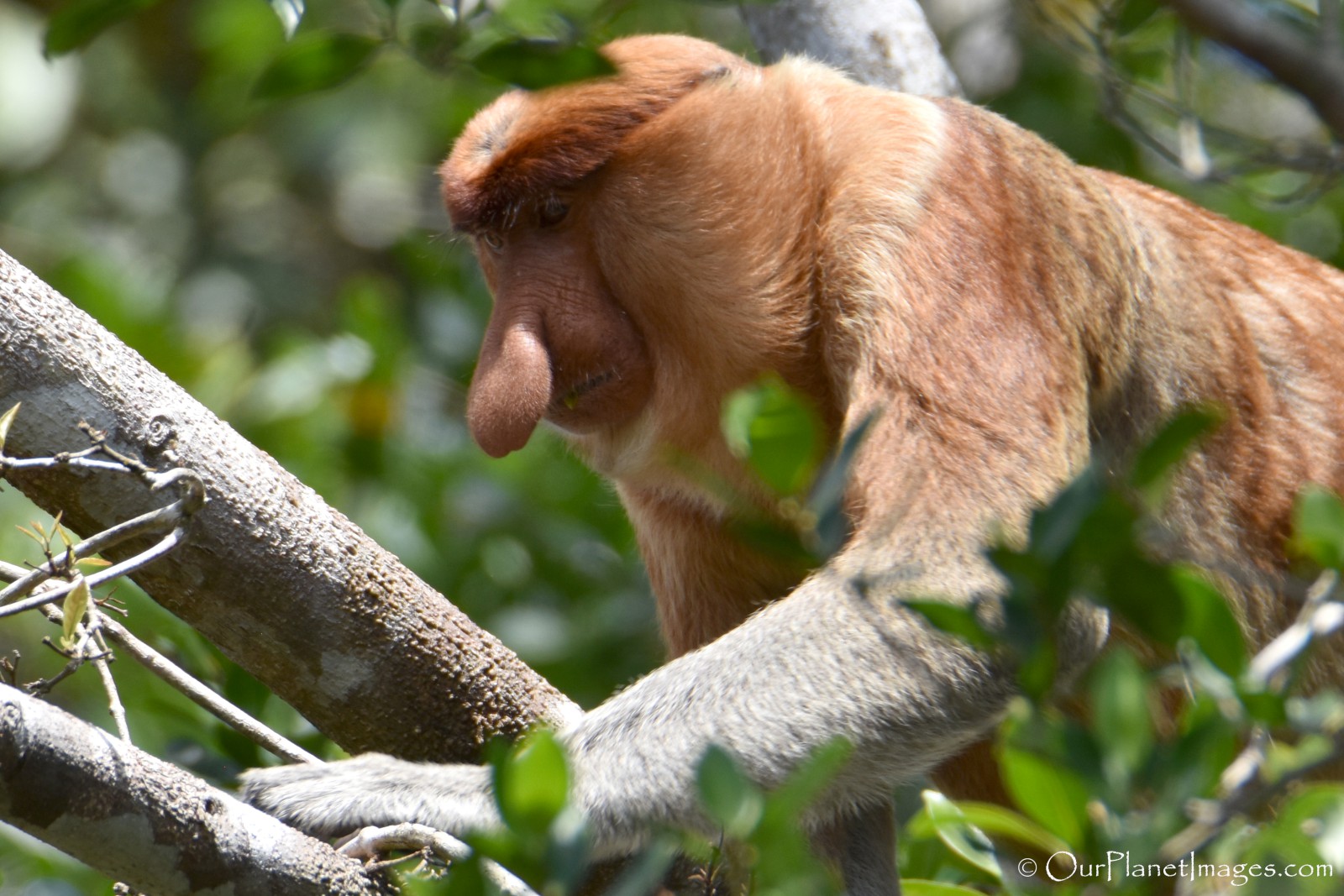
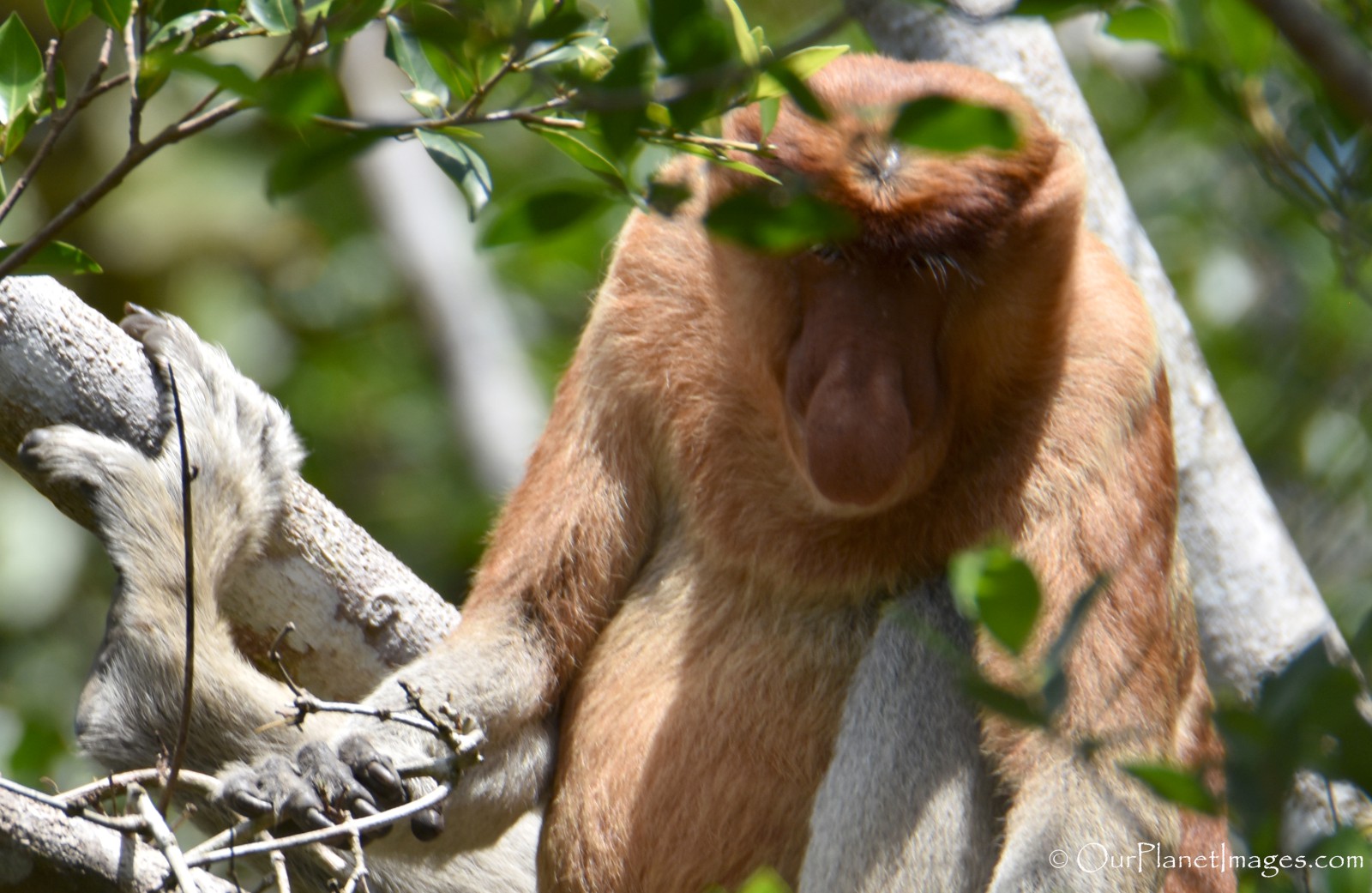
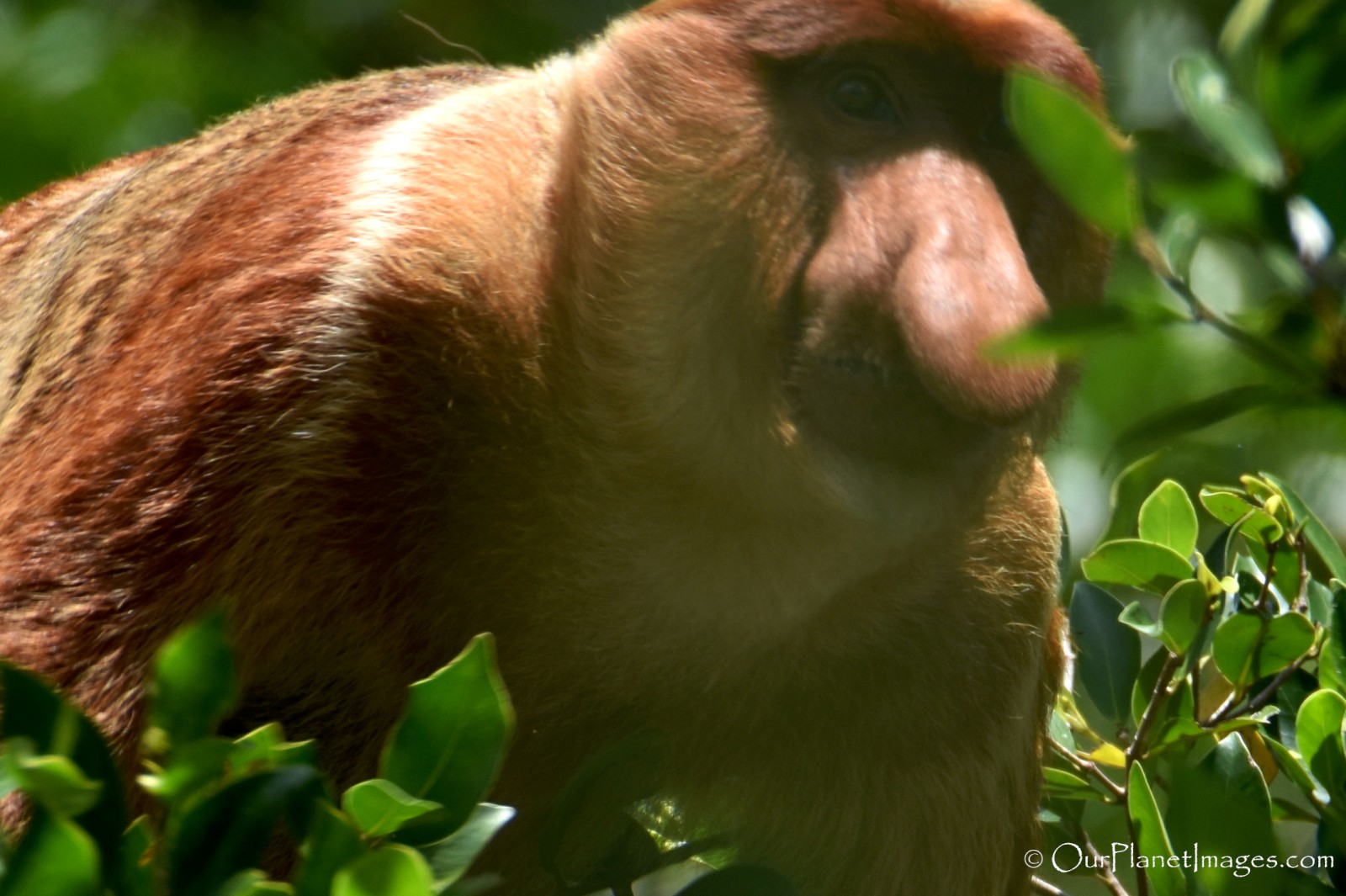
Appearance
They have a pink face with a cream or brown body with redder hair on their head and shoulders. Their limbs are gray and they have a white tail with a pot belly that helps them digest their diet of leaves and fruit. Infants are born with a blue face and an almost black coat. Their face turns gray at two months and then pink at eight to nine months old.
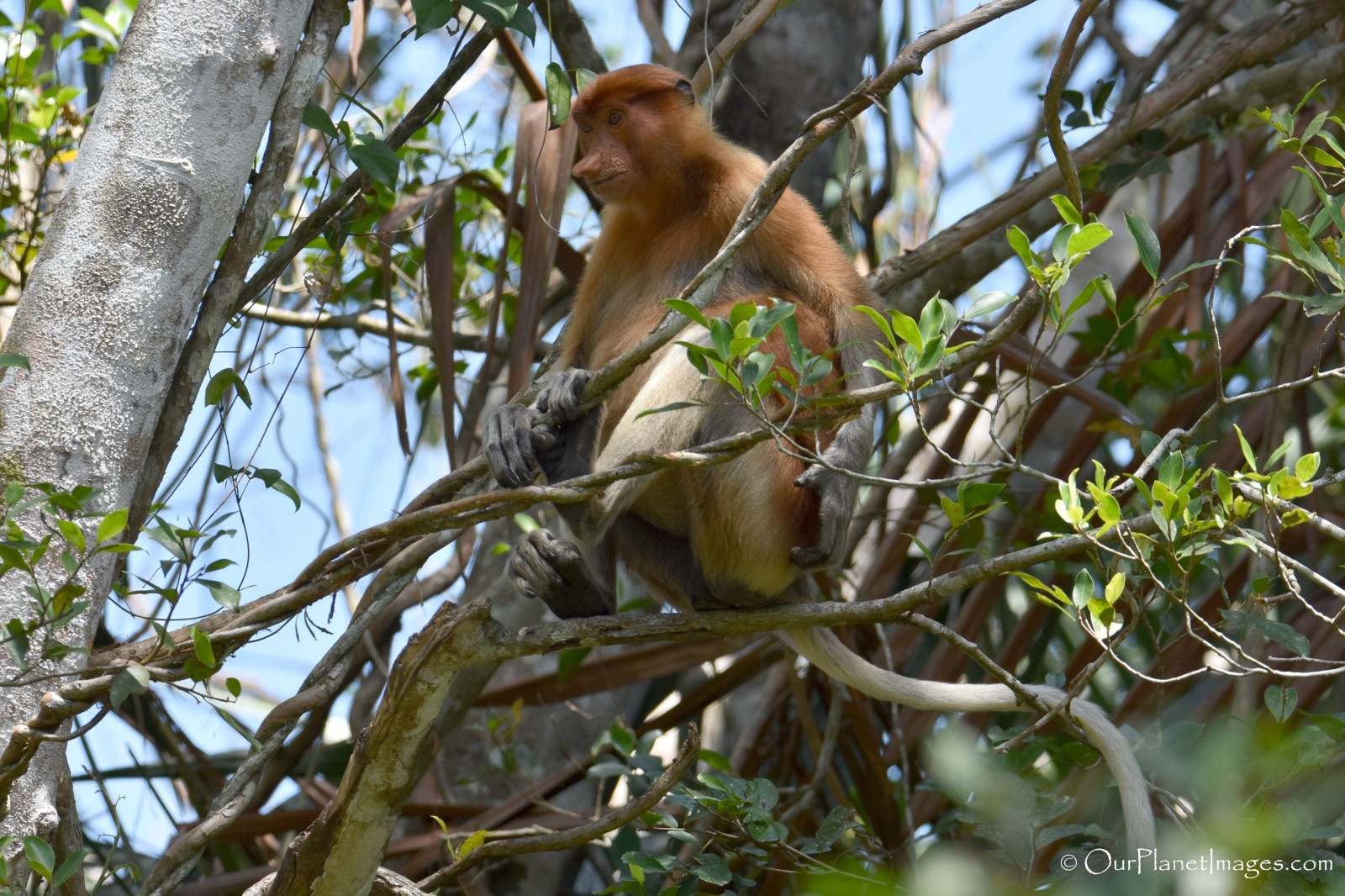
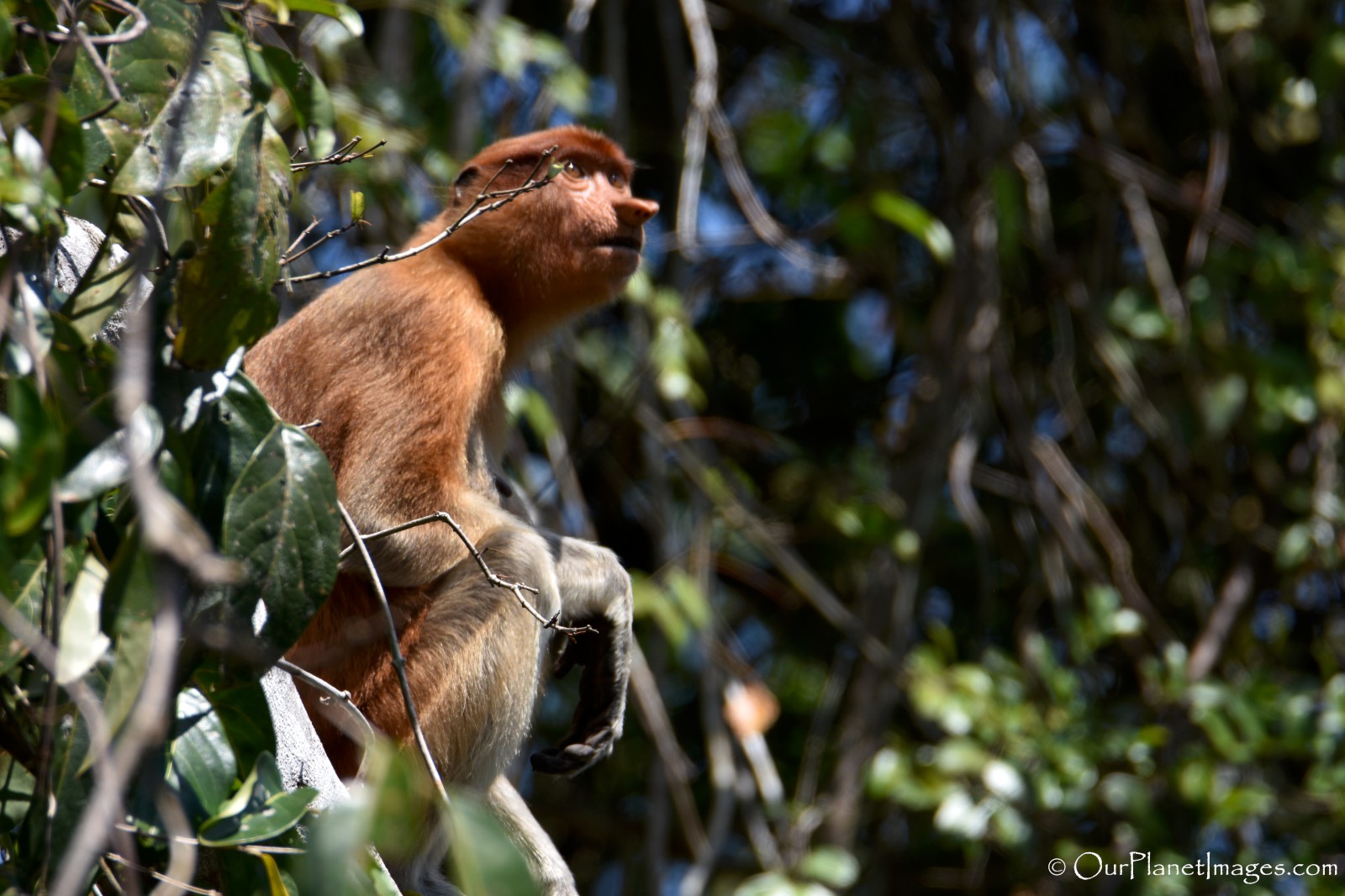
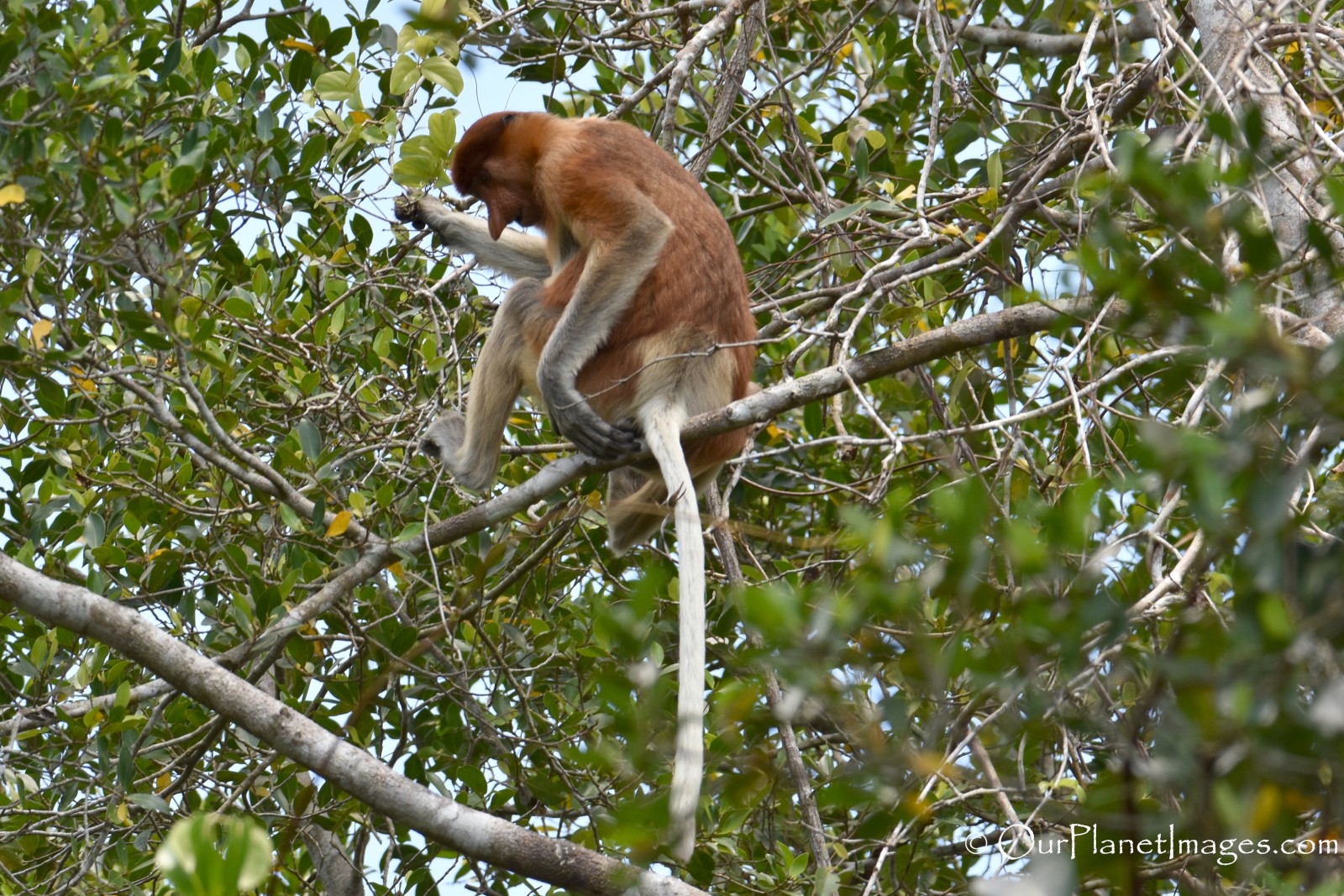
Family Units
Proboscis Monkeys live in harems of 3 to 32 individuals. A harem group consists of a dominant male and two to seven females and their offspring. Their social groups are unique because males and females sometimes move between harems throughout their lives. Females compete to mate with males and they may swap harems a number of times. Groups often congregate near water at night to sleep.
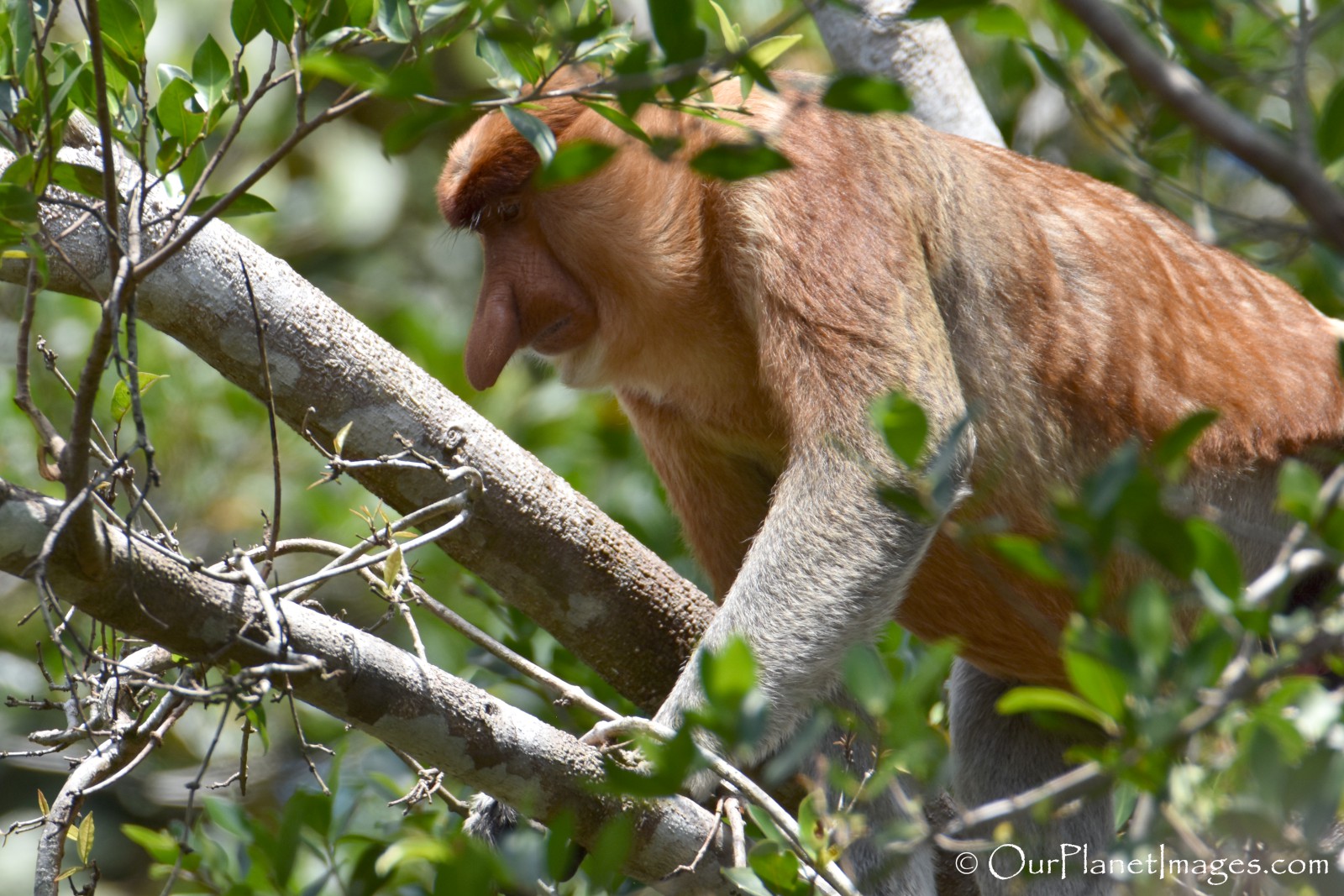
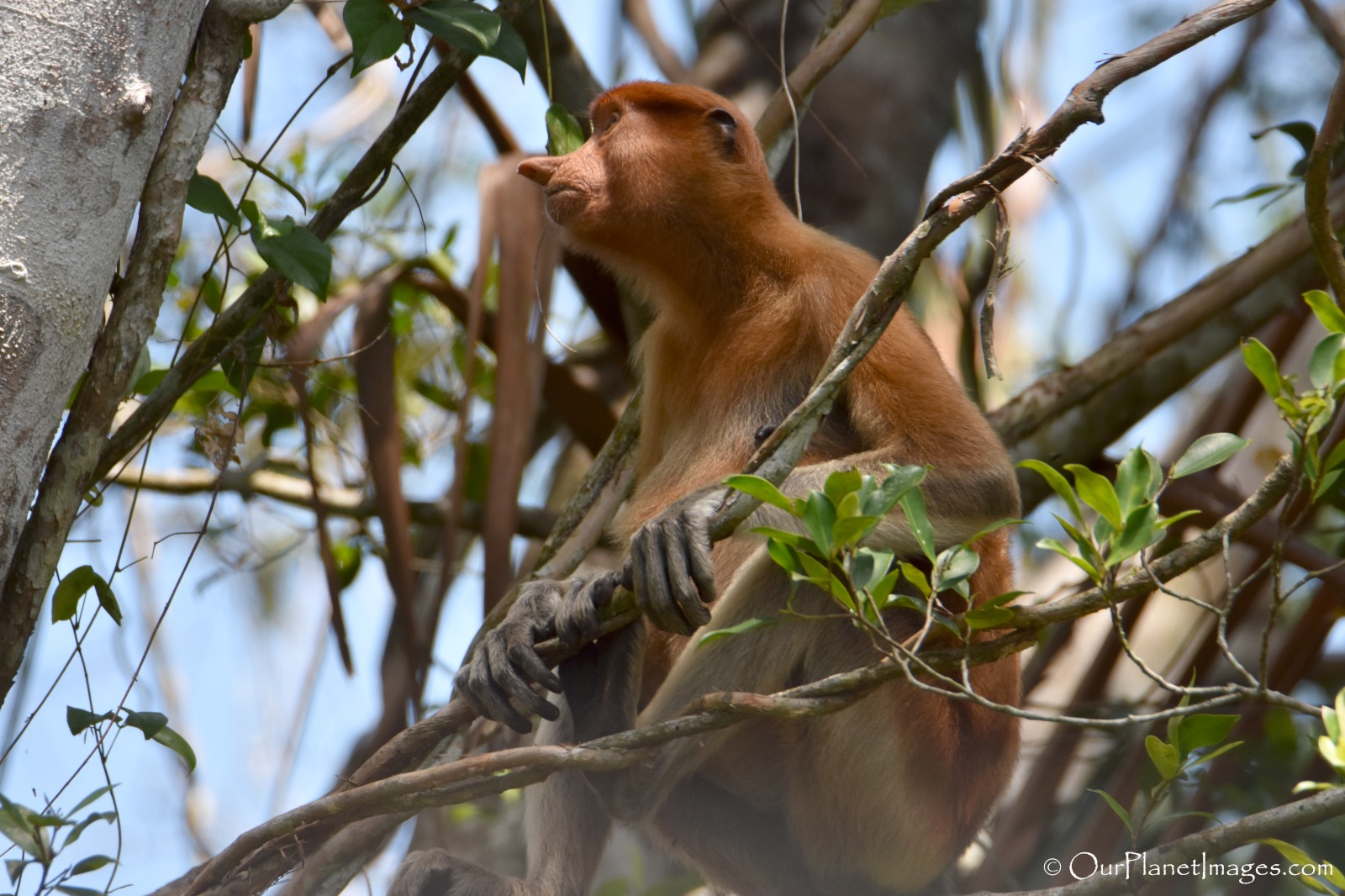
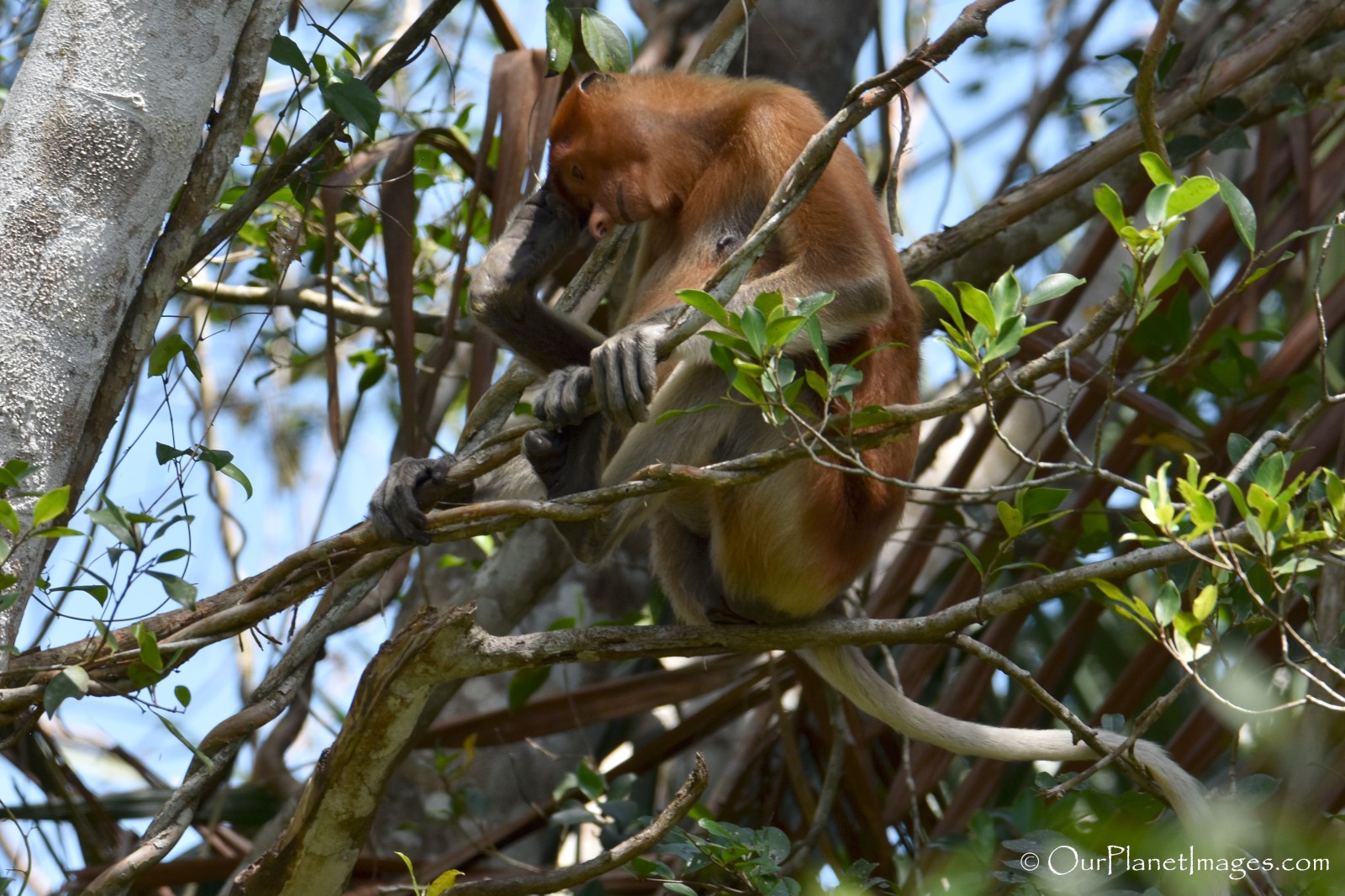
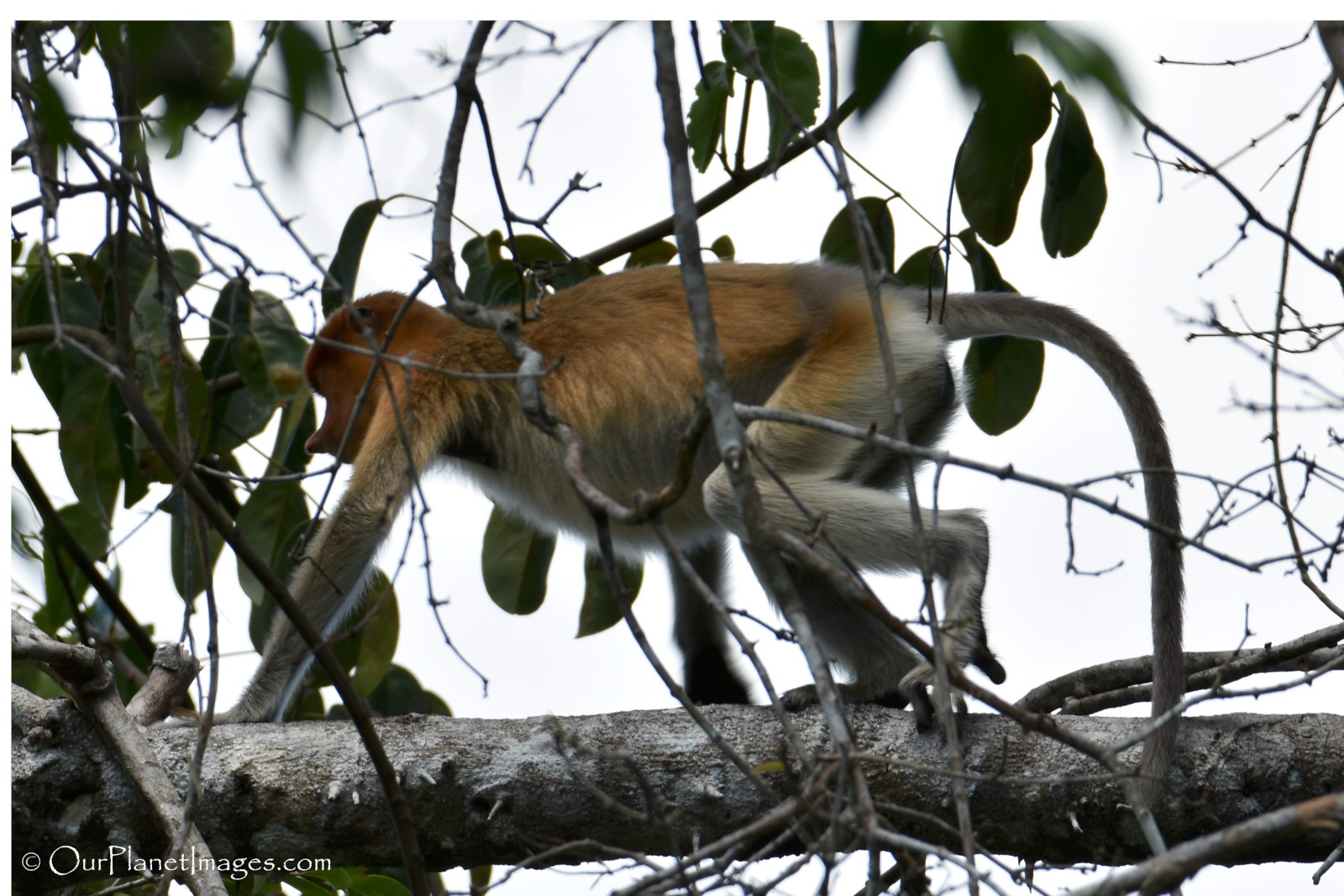
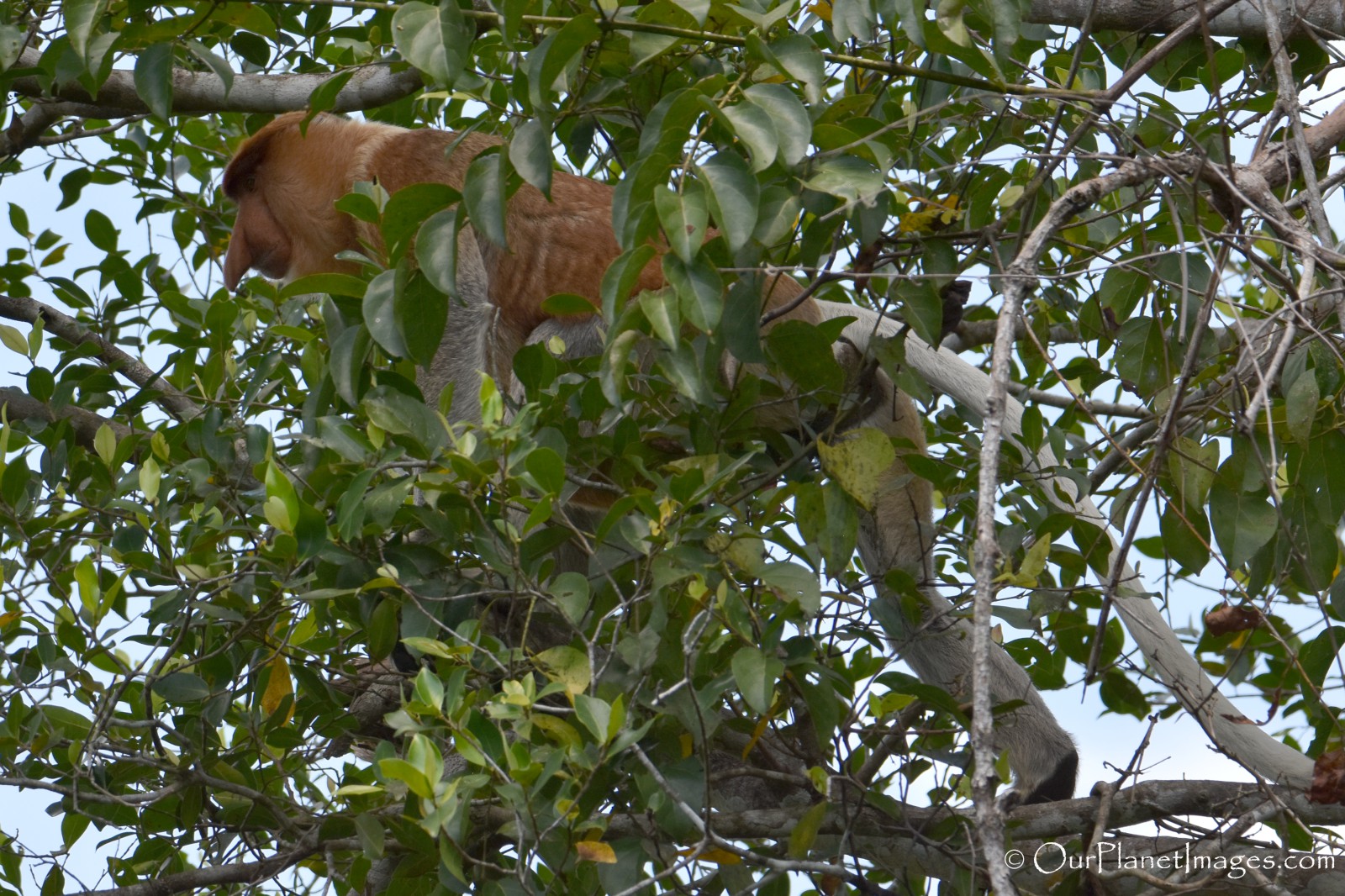
Diet
Proboscis Monkeys are herbivores that primarily eat young leave and unripe fruits. They will also eat flowers, seeds, bark, insects and insect larvae and occasionally eat crabs and mushrooms. They have also been known to raid crops such as bananas.
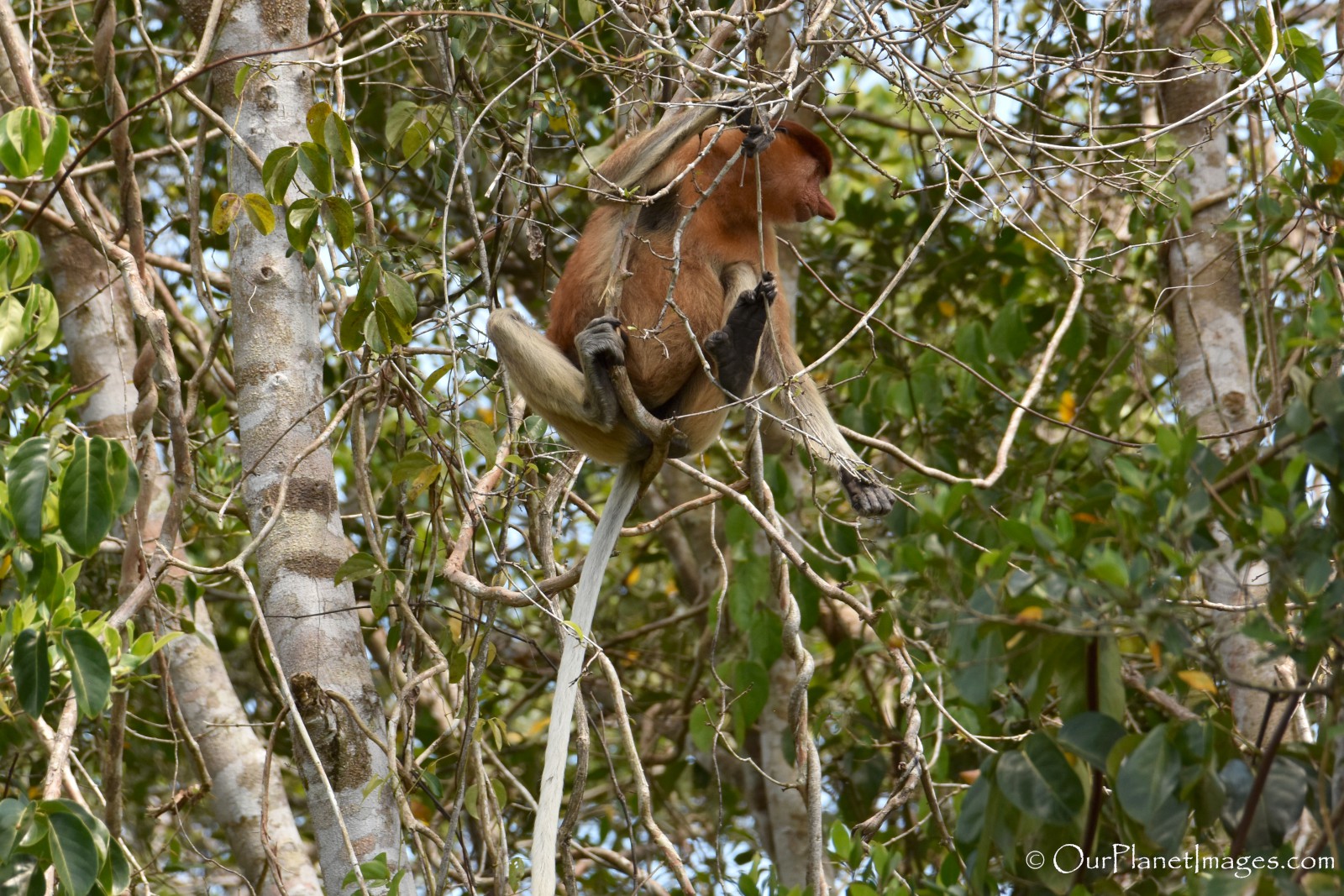
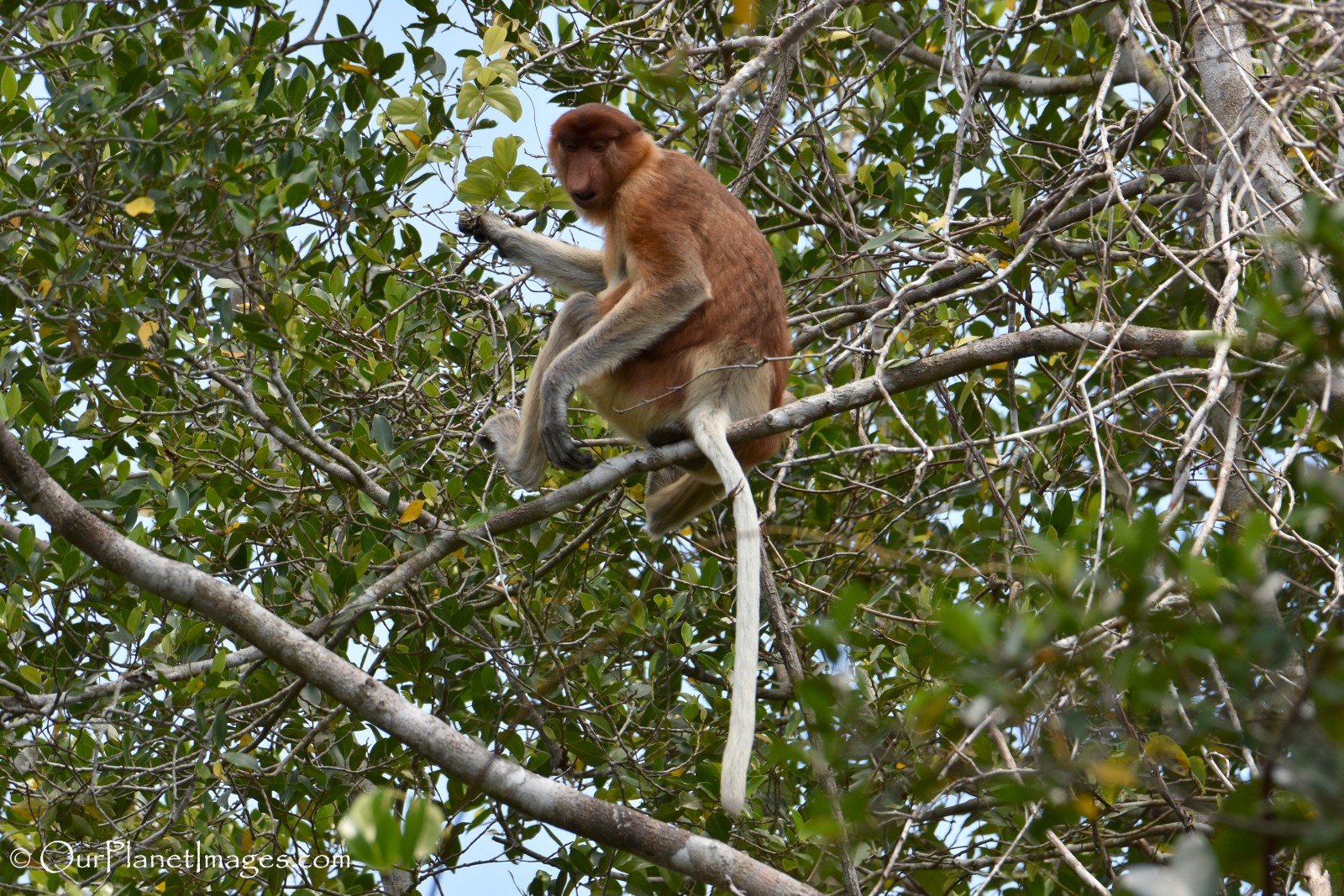
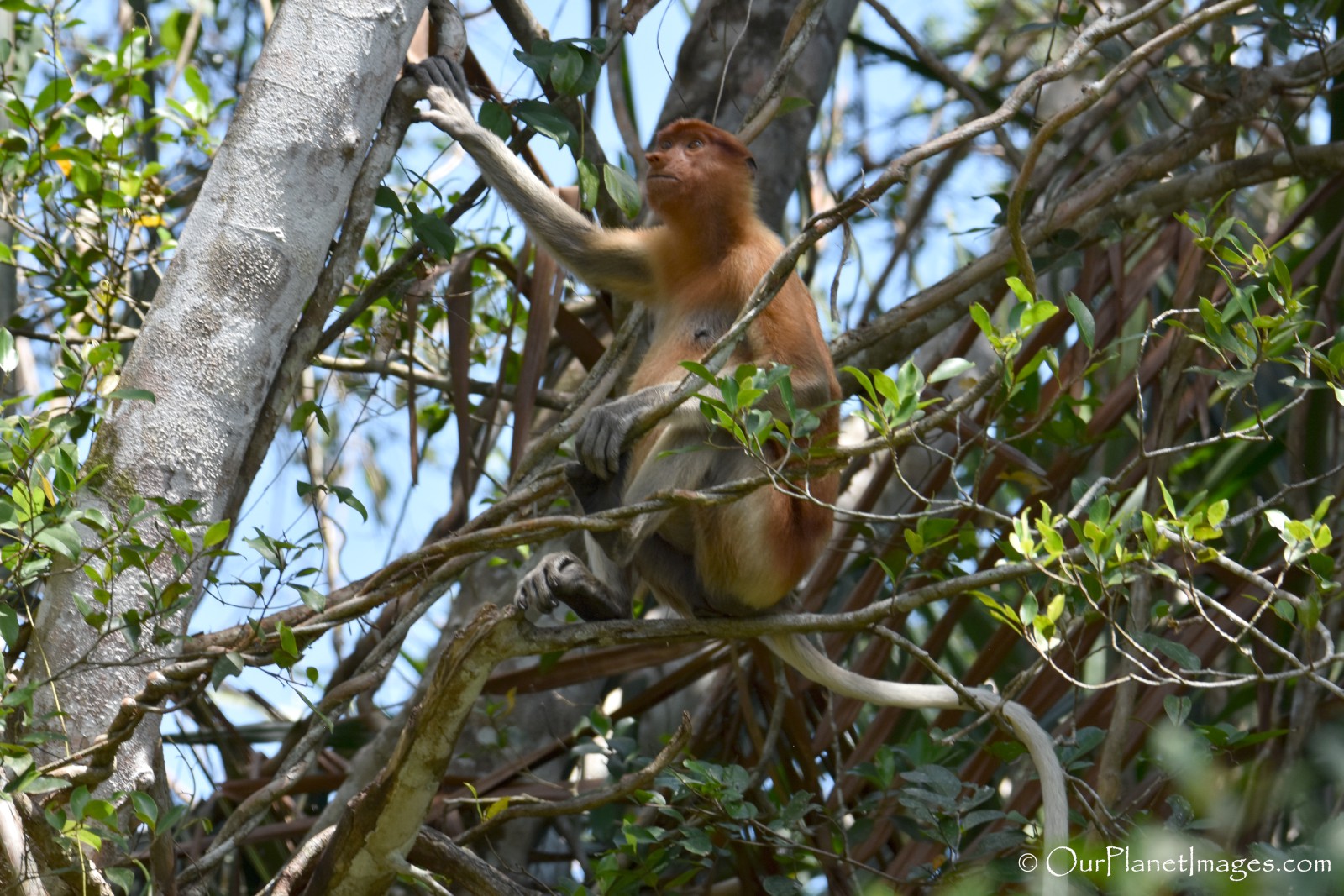
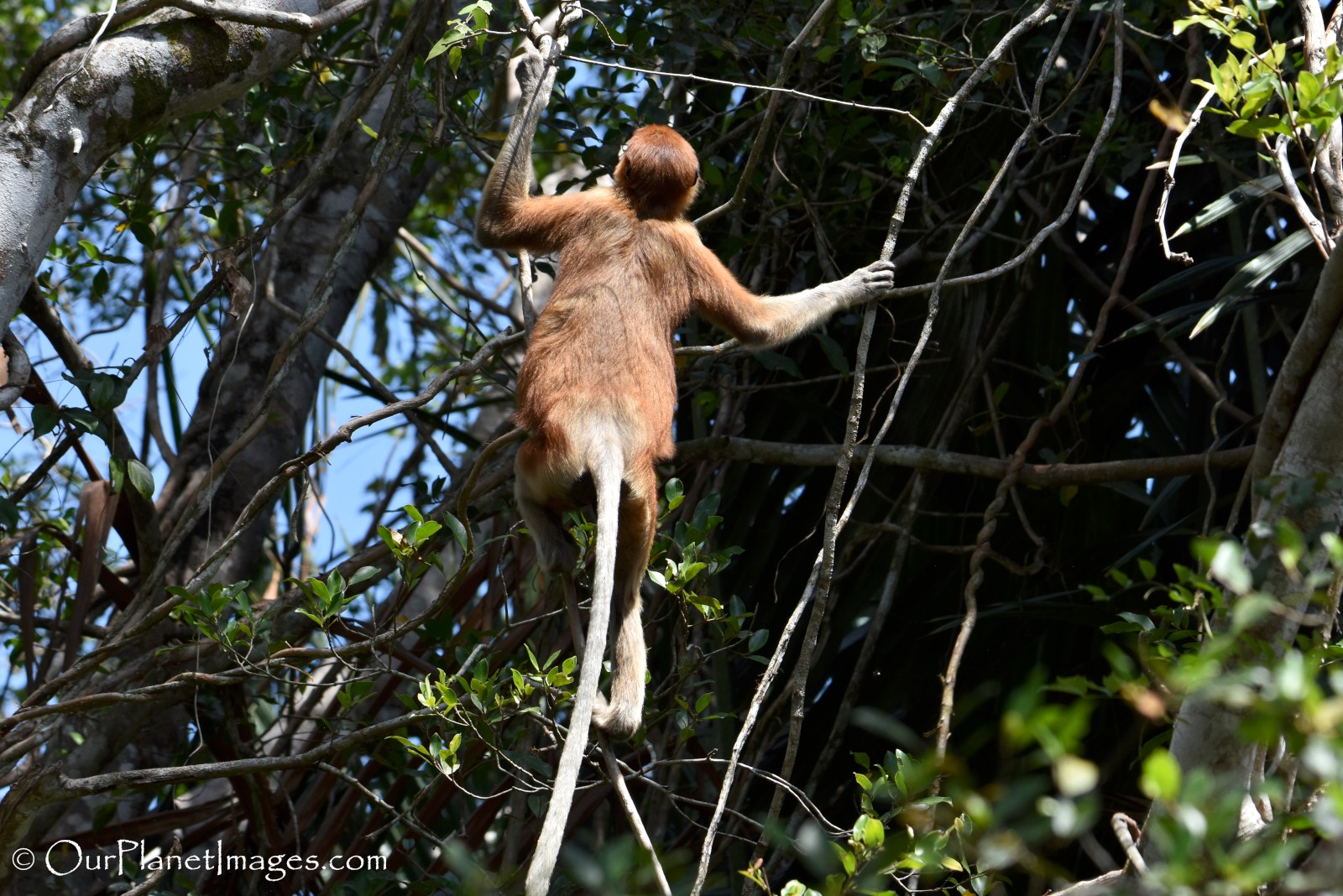
Facial Expressions
I have been luck to see monkeys in several places during my travels and I am always amused by their facial expressions. This was no exception during my encounters with the Proboscis Monkeys. Some of the facial expression that I captured in my photos are shown in the following photos.
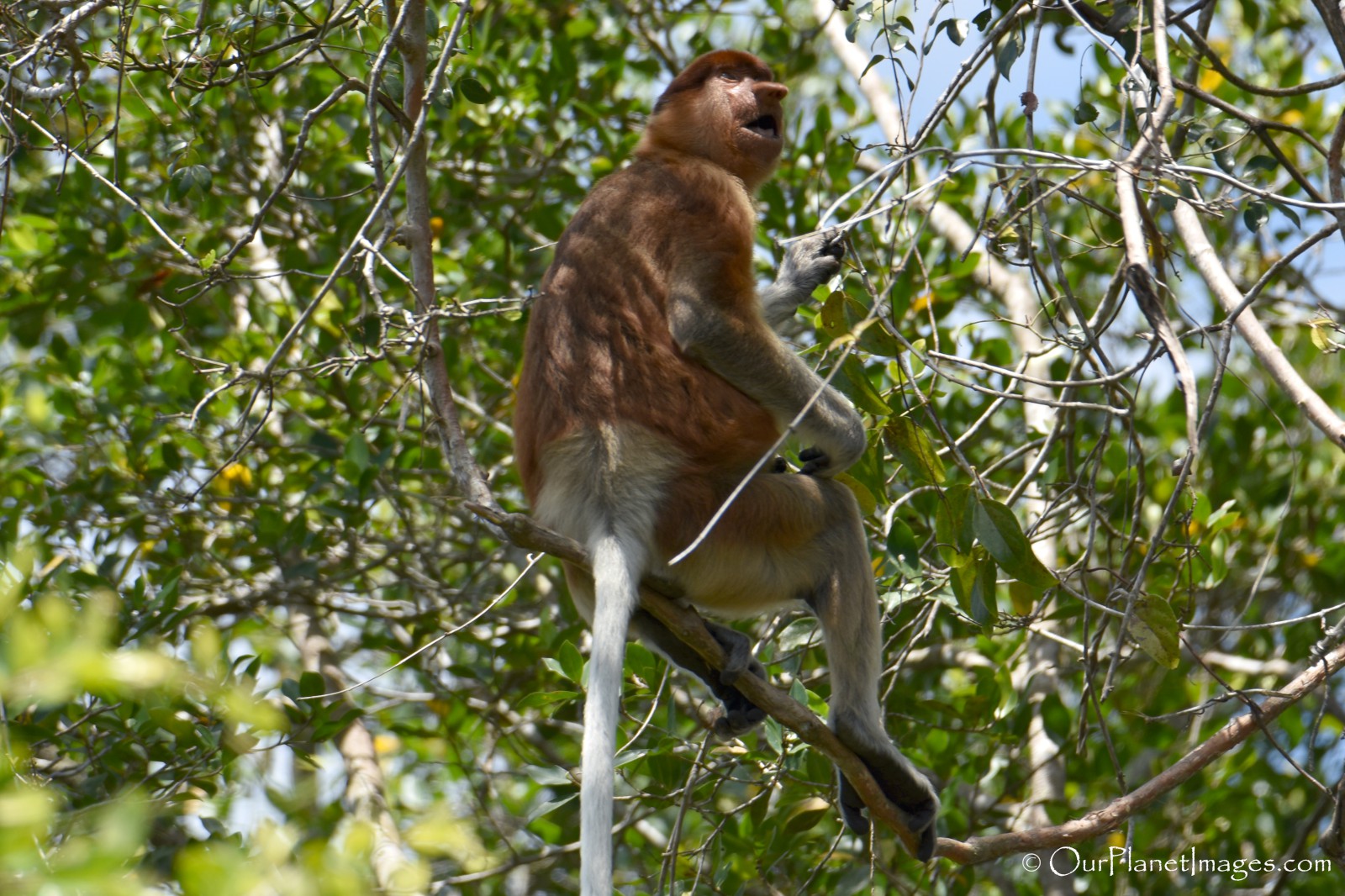
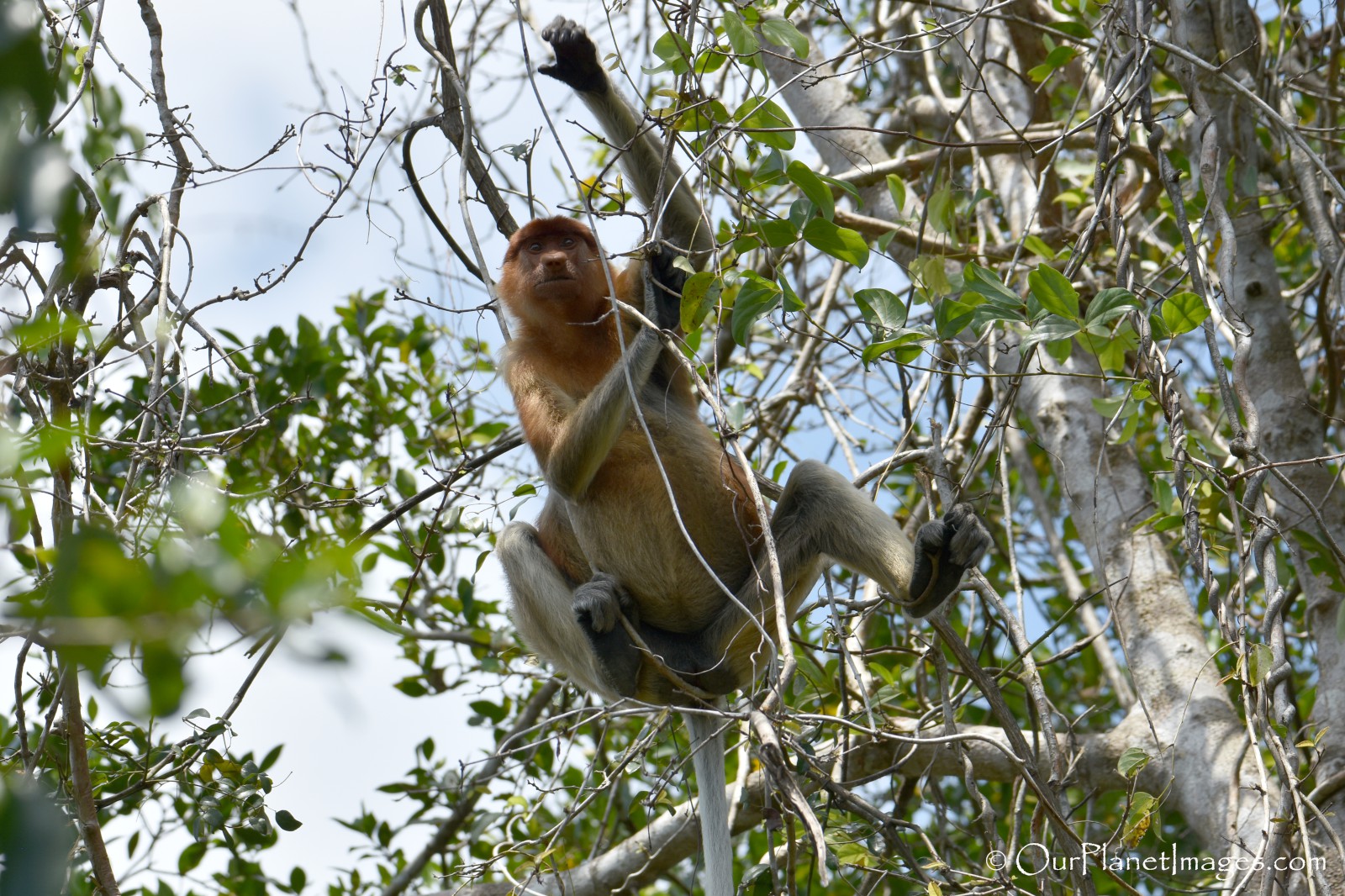
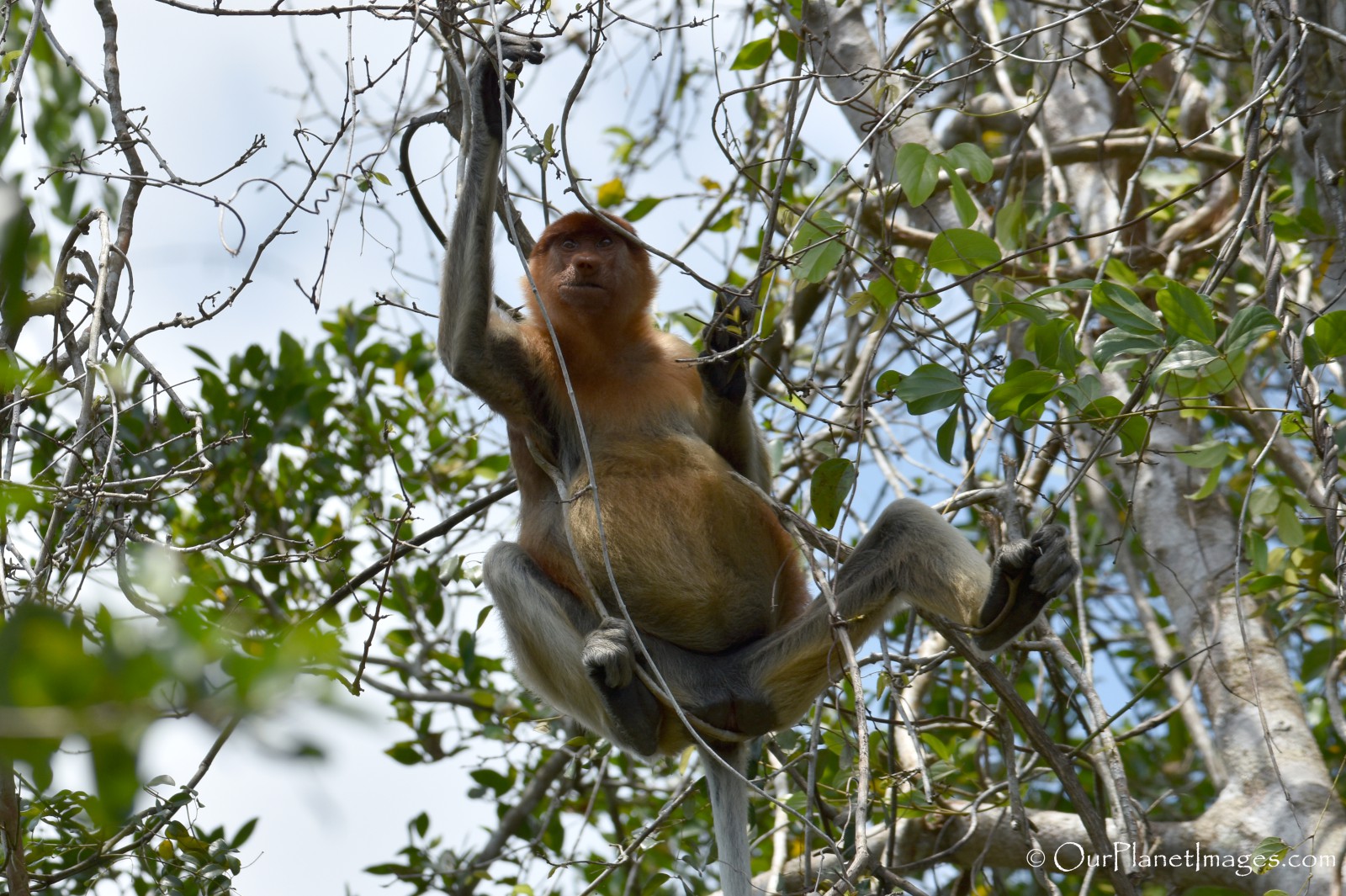
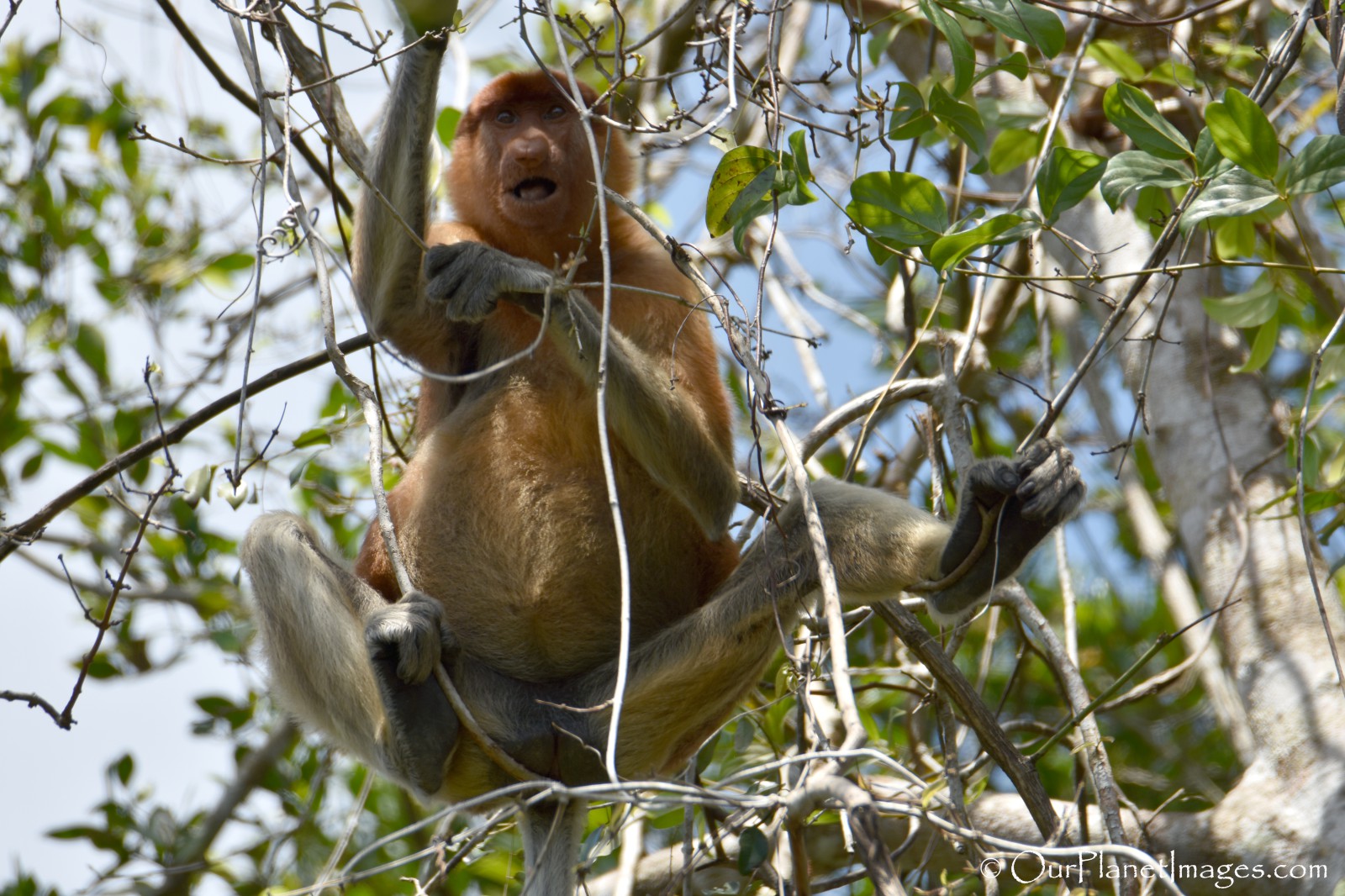
About Proboscis Monkeys
Habitat: They live in the jungles of Borneo and are almost always see within 1/3 of a mile 600 meters) from a river or in coastal mangroves and swamps.
Height and weight: They are among the largest of Asia’s monkeys. Males have a body length of 26 to 30 inches and weigh 35 to 50 pounds. Females measure 21 to 24 inches in length and weigh 15 to 26 pounds.
Lifespan: live between 15 to 20 years in the wild.
Communication: communicate with a variety of vocalizations including honking, shrieking, growling and screaming.
Reproduction: Females give birth to a single infant in the branches of a tree at night.
Interesting Fact: Proboscis Monkeys are the most aquatic primates. They are able to swim underwater for up to 20 meters and use their webbed hands and feet for swimming
